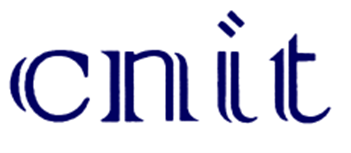6G and NTN: Challenges and Solutions Contest
6G and NTN: Challenges and Solutions Contest
Winners have been anounced - see their 20 December presentation on-demand
20 December webinar agenda
- Welcome and introduction - Giovanni Giambene (INGR Satellite WG co-chair) & Craig Polk (IEEE Future Networks Program Manager)
- 1st place winner presentation - Ruibo Wang, "Ultra-Reliable Low Latency Routing in LEO Satellite Constellations Under Stochastic Geometry Framework"
- 2nd place winner presentation - Claudia Carballo Gonzalez, "Terrestrial-Airborne Cooperation for Unicast/Multicast Service Delivery over 6G O-RAN Framework"
- 3rd place winner presentation (1 of 2 3rd prize winners) - Oscar Martinez, "Distributed Feeder Link Approach for 6G Multi-Shell Mega-Constellations"
- 3rd place winner presentation (2 of 2 3rd prize winners) - Abdullah Abu Zaid, "NTNs for Urban Air Mobility Coverage: A Novel Probability of Line-of-Sight Model"
Contest is open to residents of the United States of America and other countries, where permitted by local law, who are the age from twenty (20) to thirty-five (35).
The first author of each submitted paper should be a full-time undergraduate/graduate student at the time of submission, a Ph.D. student, or have received his/her Ph.D. in 2021, 2022, or 2023.
Entry Period: October 13, 2023 to November 10, 2023, at time 23:59 PST (firm) - CLOSED
How To Enter: Submissions will be collected though EDAS - https://edas.info/newPaper.
The applicant has to submit an innovative idea in the field of 6G Satellite Systems and Non-Terrestrial Networks (NTN) in the form of a short paper according to the IEEE Conference template.
The required paper length is up to 5 pages, double column (Times New Roman, 12-pt font size, and 20-pica column width), including references, tables, and figures of results. The submitted manuscript should not exceed 5000 words (including title, authors' names/info, abstract, body (introduction to conclusion), figures, tables, captions, footnotes, acknowledgments, and references).
The paper should cover one or more of the following topics:
- Satellite 6G and NTN architectures (including functional splits and relation with Open-RAN)
- Satellite IoT and multi-layer NTN architectures
- Optical wireless communications, including inter-satellite links
- Routing in 3D multi-orbit NTN systems
- AI for optimization
- Edge computing
- Security via satellite
- Quantum communications via satellite
- Standardization and regulation activity (3GPP, ETSI, IEEE, CCSDS, ITU, WRC).
- Satellite signal processing, waveform design, and link-layer optimization
- PHY layer co-existence and interference handling in NTN
There is a limit of max one paper submission (entry) per person.
Prize: The top three (3) submissions will receive a prize. Prize amounts will be:
- $500 First Prize
- $300 Second Prize
- $200 Third Prize
The top three prize winners will be invited to present their paper on an IEEE Future Networks webinar during December 2023. They will also be invited to submit their paper to the IEEE Future Networks Tech Focus publication.
6GNTN23 TPC
Joan Bas, CTTC, Spain
Petros Bithas, National and Kapodistrian University of Athens, Greece
Franco Davoli, University of Genoa, Italy
Tomaso de Cola, DLR, Germany
Marco Giordani, University of Padova, Italy
Wael Jaafar, École de Technologie Supérieure (ÉTS), Montreal, Canada
Andreas Knopp, Bundeswehr University Munich, Germany
Gabriele Oligeri, Hamad bin Khalifa University, Qatar
Craig Polk, IEEE, US
Paresh Saxena, BITS Pilani, Hyderabad Campus, India
Daniele Tarchi, University of Bologna, Italy
Liang Zhao, Shenyang Aerospace University, China
University Ambassadors
 |
CNIT - National Inter-University Consortium for Telecommunications
Viale G.P. Usberti, 181/A Pal.3 - 43124 Parma (PR), Italy
|

